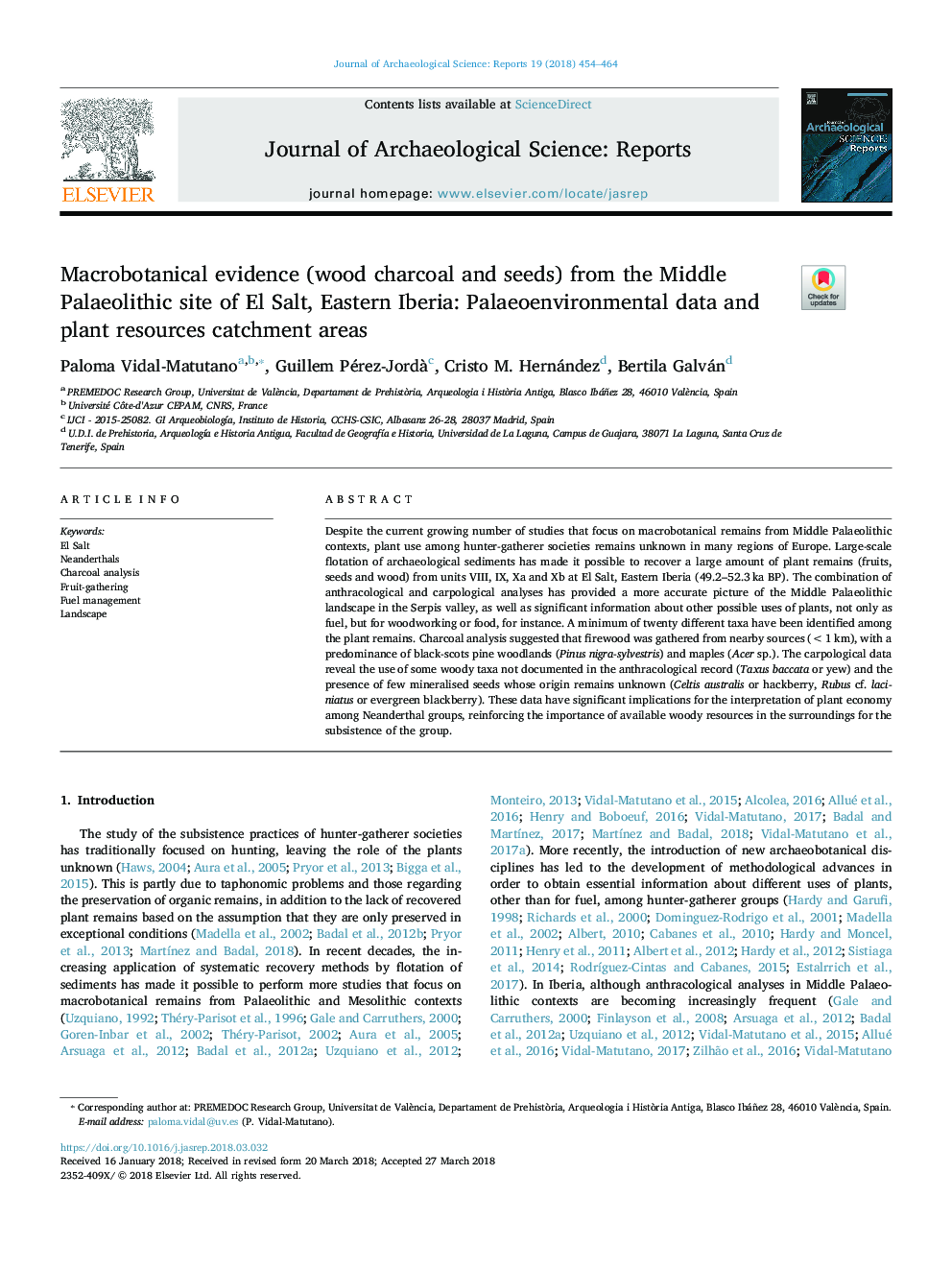| Article ID | Journal | Published Year | Pages | File Type |
|---|---|---|---|---|
| 7444796 | Journal of Archaeological Science: Reports | 2018 | 11 Pages |
Abstract
Despite the current growing number of studies that focus on macrobotanical remains from Middle Palaeolithic contexts, plant use among hunter-gatherer societies remains unknown in many regions of Europe. Large-scale flotation of archaeological sediments has made it possible to recover a large amount of plant remains (fruits, seeds and wood) from units VIII, IX, Xa and Xb at El Salt, Eastern Iberia (49.2-52.3â¯ka BP). The combination of anthracological and carpological analyses has provided a more accurate picture of the Middle Palaeolithic landscape in the Serpis valley, as well as significant information about other possible uses of plants, not only as fuel, but for woodworking or food, for instance. A minimum of twenty different taxa have been identified among the plant remains. Charcoal analysis suggested that firewood was gathered from nearby sources (<1â¯km), with a predominance of black-scots pine woodlands (Pinus nigra-sylvestris) and maples (Acer sp.). The carpological data reveal the use of some woody taxa not documented in the anthracological record (Taxus baccata or yew) and the presence of few mineralised seeds whose origin remains unknown (Celtis australis or hackberry, Rubus cf. laciniatus or evergreen blackberry). These data have significant implications for the interpretation of plant economy among Neanderthal groups, reinforcing the importance of available woody resources in the surroundings for the subsistence of the group.
Related Topics
Social Sciences and Humanities
Arts and Humanities
History
Authors
Paloma Vidal-Matutano, Guillem Pérez-Jordà , Cristo M. Hernández, Bertila Galván,
